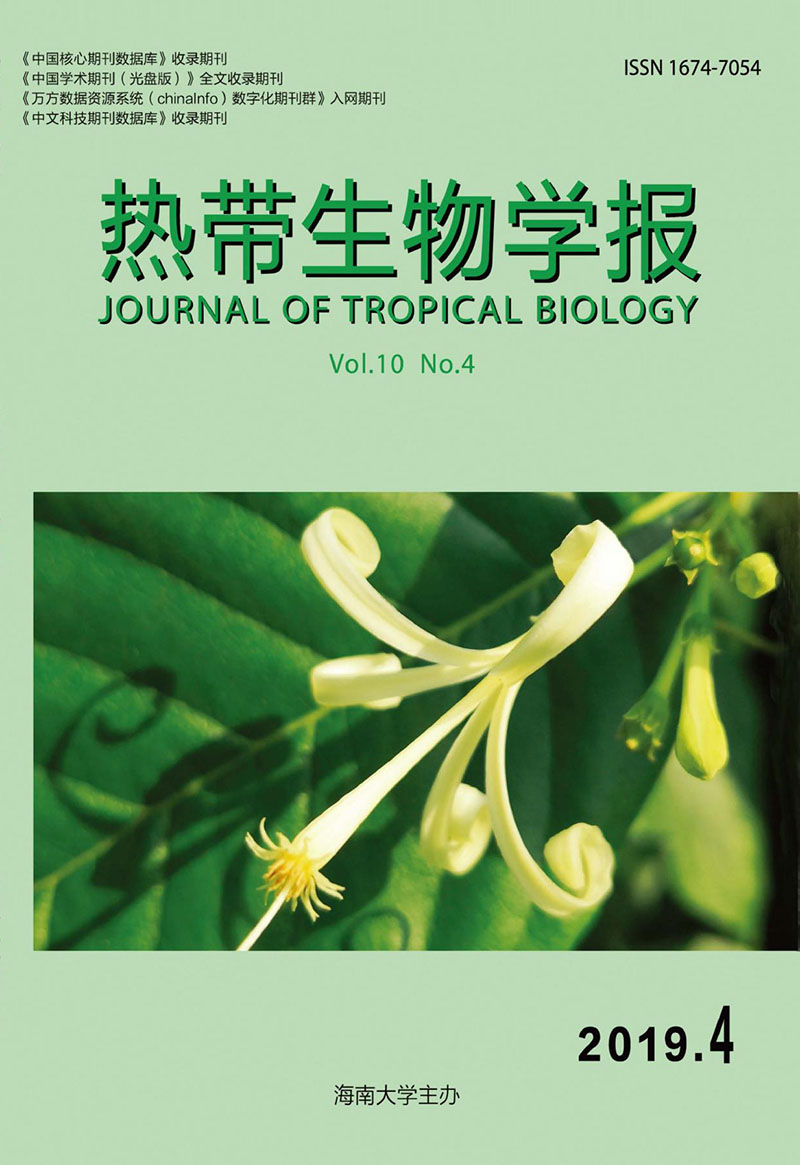|
[1]
|
谭搏.茶籽饼中茶皂素的提取纯化与茶籽多糖的提取[D].长沙:中南林业科技大学,2009. |
|
[2]
|
TOMITA M,YAMAMOTO S,YAMAGUCHI K,et al.Theasaponin E1 destroys the salt tolerance of yeasts[J].Journal of Bioscience & Bioengineering,2000,90(6):637-642. |
|
[3]
|
SUR P,CHAUDHURI T,VEDASIROMONI J R,et al.Anti-inflammatory and anti-oxidant property of saponins of tea [Camellia sinensis (L.) O.Kuntze] root extract[J].Phytotherapy Research,2001,15(2):174-176. |
|
[4]
|
李泰然.中国食源性疾病现状及管理建议[J].中华流行病学杂志,2003,24(8):651-653. |
|
[5]
|
廖兴广,王法云,朱海华,等.肉鸡养殖和屠宰加工过程中沙门氏菌污染状况及血清型分析[J].河南预防医学杂志,2017(9):718-720. |
|
[6]
|
朱恒文,方艳红,王元兰,等.肉鸡屠宰加工生产链中沙门氏菌的污染调查及 ERIC-PCR 溯源[J].食品科学,2012,33(17):48-53. |
|
[7]
|
CAROCHO M,BARREIRO M F,MORALES P,et al.Adding molecules to food,pros and cons:A review on synthetic and natural food additives [J].Comprehensive Reviews in Food Science & Food Safety,2014,13(4):377–399. |
|
[8]
|
张媛媛,李艳利,李书国.植物源食品防腐剂抑菌机理和效果及在食品保鲜中的应用[J].粮油食品科技,2014(4):48-53. |
|
[9]
|
顾姣,杨瑞金,谢斌,等.大孔树脂纯化茶皂素及其产品性质研究[J].食品与机械,2017(6):153-158. |
|
[10]
|
WU H,ZHANG L,WANG N,et al.Analysis of the bioactive components of Sapindus saponins [J].Industrial Crops & Products,2014,61:422-429. |
|
[11]
|
YAO X,ZHU X,PAN S,et al.Anti-microbial activity of nobiletin and tangeretin against Pseudomonas [J].Food Chemistry,2012,132 (4):1883-1890. |
|
[12]
|
何丽.基于微生物控制的冷鲜淡水鱼分割产品的保鲜技术研究[D].武汉:武汉轻工大学,2016. |
|
[13]
|
LV F,LIANG H,YUAN Q,et al.In Vitro antimicrobial effects and mechanism of action of selected plant essential oil combinations against four food-related microorganisms[J].Food Research International,2011,44(9):3057-3064. |
|
[14]
|
DIAO W R,HU Q P,ZHANG H,et al.Chemical composition,antibacterial activity and mechanism of action of essential oil from seeds of fennel (Foeniculum vulgare Mill.)[J].Food Control,2014,35(1):109-116. |
|
[15]
|
MIAO J,GUO L,CHANG K,et al.Inhibitory effects of a novel antimicrobial peptide from kefir against Escherichia coli[J].Food Control,2016,65:63-72. |
|
[16]
|
ELENADEL R,Mónica P M,MIGUEL P,et al.Effect of various chemical decontamination treatments on natural microflora and sensory characteristics of poultry[J].International Journal of Food Microbiology,2007,115:268-280. |
|
[17]
|
SáNCHEZ-GONZáLEZ I,CARMONA P,MORENO P,et al.Protein and water structural changes in fish surimi during gelation as revealed by isotopic H/D exchange and Raman spectroscopy[J].Food Chemistry,2008,106(1):56-64. |
|
[18]
|
WANG C,CHANG T,YANG H,et al.Surface physiological changes induced by lactic acid on pathogens in consideration of pKa and pH[J].Food Control,2014,46:525-531. |
|
[19]
|
LONG M,WANG J,ZHUNG H,et al.Performance and mechanism of standard nano-TiO2 (P-25) in photocatalytic disinfection of foodborne microorganisms:Salmonella typhimurium and Listeria monocytogenes[J].Food Control,2014,39:68-74. |
|
[20]
|
王巍,牟德华,李丹丹.山楂果胶寡糖的抑菌性能及机理[J].食品科学,2018,39(7):110-116. |
|
[21]
|
黄巍,王建清,张倩.香旱芹精油对金黄色葡萄球菌抑菌机理的研究[J].中国调味品,2017,42(12):7-11. |
|
[22]
|
庞彩霞,王利民.银杏叶提取物对冷藏金线鱼鱼丸的保鲜效果研究[J].食品研究与开发,2017,38(13):194-198. |
|
[23]
|
KONG W,ZHANG T,FENG D,et al.Effects of modified starches on the gel properties of Alaska Pollock surimi subjected to different temperature treatments[J].Food Hydrocolloids,2016,56(1):20-28. |
|
[24]
|
YU Y M,MA X S,YI S M,et al.Effect of bean starches on the gel properties of silver carp surimi[J].Modern Food Science & Technology,2016,32(1):129-135. |
|
[25]
|
张赟彬,缪存铅,宋庆,等.荷叶精油对肉类食品中常见致病菌的抑菌机理[J].食品科学,2010,31(19):63-66. |






 DownLoad:
DownLoad: